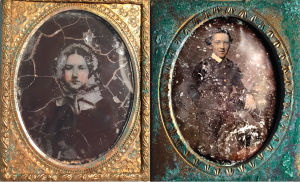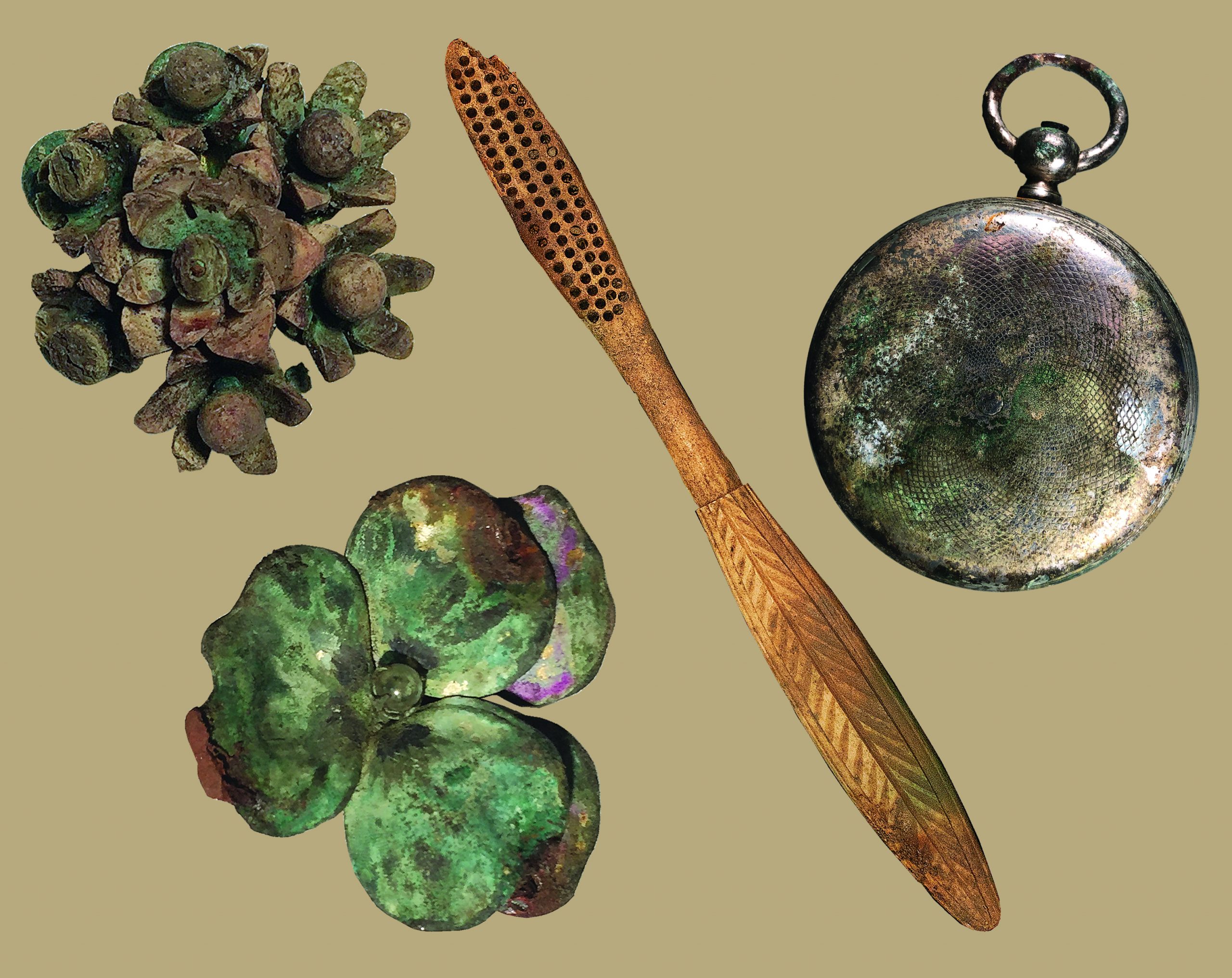By Anya Gruber
All archaeological artifacts are precious objects that require care and attention to ensure they stay intact for generations to come, but some artifacts require more specialized care than others—like the 200-year-old photographs found during an archaeological excavation in Plymouth, Massachusetts in 2016. When a team of archaeologists from the Fiske Center for Archaeological Research at University of Massachusetts Boston (UMass Boston) recovered a remarkable cache of fragile, mysterious 19th-century artifacts—including those photographs, a lock of human hair, a pocket watch, and delicate beaded jewelry—they realized it was crumbling in their hands. So they called in the Center’s archaeological conservator, Dennis Piechota. Conservation of artifacts relies on technical scientific methods along with a heap of patience, but with the right skill and care, even badly deteriorated archaeological artifacts can be interpreted and preserved. Sometimes, though, artifacts are so fragile that merely handling them entails great risk. It is a puzzle that conservators like Piechota face: How do you stabilize an object—without damaging it—for the benefit of research?
In 2016, a team of archaeologists led by Christa Beranek and David Landon from UMass Boston unearthed a collection of objects from a small backyard of a duplex that was razed in the 1920s, adjacent to a modern condominium building, at Cole’s Hill, a National Historic Landmark known for containing the first cemetery used by the passengers of the Mayflower in the early 1600s. Today, Cole’s Hill overlooks a bustling coastal district and hosts a National Day of Mourning demonstration held by the United American Indians of New England every Thanksgiving. The archaeologists were excavating a grassy lawn on Cole’s Hill ahead of a proposed construction project and expected to find the remains of early 19th-century buildings evidenced by typical urban finds like brick fragments and broken window glass. Instead, they found an unusual cache of domestic objects neatly buried in the western corner of the yard at Cole’s Hill.

A stack of photographs representing some of the earliest techniques were found in the cache. An ambrotype (left) and a daguerreotype (right) are in their original frames.
Photo Credit: UMass Boston
Excavated over the course of two field seasons, the cache contained hundreds of personal objects buried in a deep, rectangular pit, probably marked on the surface by a surrounding fence. Through genealogical research and careful study of the artifacts, Beranek and former students Victoria Cacchione and Nadia Waski hypothesized that the cache may have been buried by Mrs. Judith Jackson sometime after 1885. The cache seemed to contain items that would have belonged to each of the members of the Jackson family—a pocket watch, drawing pencils, the contents of a sewing kit, a perfume bottle, a pouch of bullets, a belt, jewelry, and collar studs. At the center of the group was a stack of photographs. Folded items of clothing or pieces of cloth sat underneath many of the collections of objects. Although no other examples of the practice are known, the excavators interpreted this as a personal act of mourning—collecting and burying items from deceased family members in a marked location in the house’s yard—a possible extension of better-known Victorian mourning practices that were expressed through clothing or jewelry. This memorial cache is notable for its unusually large number of artifacts made from organic materials such as leather, paper, silk, and wood, which degrade more quickly in soil than other materials such as stone, ceramics, or metal. As soon as the field archaeologists realized they had found these fragile objects, they called in their conservator. Piechota lifted a block of soil straight out of the ground, encasing the artifacts in their sandy home until he could carefully and systematically excavate them in the lab.




